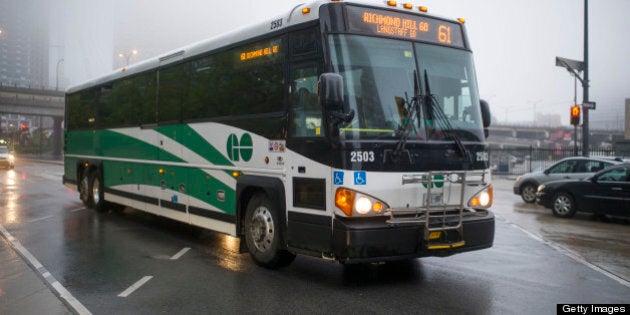
It may well be true that the Greater Toronto Area has under-invested in transportation infrastructure. That does not mean that one should support the funding proposal that emerged from Metrolinx this week.
Metrolinx is the government super-agency with the mandate to oversee new public transit infrastructure. Metrolinx argues that congestion has led to overly long commute times, imposing a large burden of cost on people and businesses in the GTA. It proposes a variety of transit infrastructure plans over the coming decades.
To pay for this infrastructure, Metrolinx has proposed a narrow and poorly targetted set of revenue raising measures.
One of these is an increased gasoline tax, which is at least peripherally related to transportation. Higher gasoline prices may have some effect on rush hour commuters who contribute to road congestion. However, it is also borne by people who only use their cars for pleasure at off-peak times. It is a blunt instrument at best.
If there is a problem of road congestion, the obvious way to attack it is with road congestion charges, such as the ones that have been applied in the central area of London, England. Similarly, variable hourly tolls can be put on busy highways, to encourage people to switch to transit or to carpools. The technology now exists to have very precise charges that can target the most congested periods.
Congestion charges recognize that roads are not free. In heavily built up urban areas it may simply not be feasible to build more roads. As the demand goes up, the value of this scarce road space rises. Charges should be levied accordingly. The revenue that comes from these charges can, in turn, be used to subsidize public transit. That provides a good alternative for the people who cannot afford the road charges.
In a bizarre twist, the largest source of revenue that Metrolinx wants to tap into would be from a 1 percentage point increase in the HST. This would raise the largest chunk of the revenue, about $1.3 billion per year. Consider the irony of this. The HST is charged on a wide range of purchases, including many that are aimed at reducing road congestion. The increased HST would penalize people who are not making any contribution at all to road congestion.
Among other things, HST is charged on the purchase of new housing, such as condos in central urban areas. Many people want to avoid congestion by living close to where they work, and many now live in walking or cycling distance due to increased downtown construction.
Metrolinx argues that the HST can be made less unfair by credits for low income groups. However, credits to a relatively small proportion of the population do not alleviate the burden on the broad middle class. As I have shown in my recent study, "Equity Versus Efficiency in the Design of the Tax Mix," sales taxes fall most heavily on this group. By contrast, income tax rates rise with income, and are better related to the ability to pay.
Metrolinx has forgotten that Ontario consumers have already faced a substantial increase in the sales tax burden in recent years, with the switch to the HST. By contrast, business taxes in Ontario have been cut sharply. Businesses would also benefit from reduced congestion.
If general taxation is being considered, more attention needs to be paid to business taxes as a source of revenue. Corporate tax rates have been cut in Ontario since 2009, with the aim of generating more investment. Overall, investment growth in Ontario has been weak, and the levels of business investment spending in Ontario are just barely above pre-recession levels.
As outgoing Bank of Canada Governor Mark Carney noted, corporations have been sitting on large piles of cash rather than investing, which suggests that the extra money they have from tax cuts is not being put to good use. This situation is particularly worrisome in Ontario, where investment growth has lagged behind the rest of Canada, in spite of major tax cuts. There may be other factors at work, such as oil prices and the high Canadian dollar, and it may be too soon to judge the success of the policy. However, this area of taxation should also receive careful scrutiny.
It is odd that an agency such as Metrolinx, with no clear expertise in taxation, is being allowed to propose general tax changes at all.
Higher taxes of any kind can have a variety of undesirable impacts. In the case of the HST, one of the problems is an increasing incentive to switch spending to the underground economy.
It is usually best to raise revenue through a charge for a service that the government provides, unless a compelling social reason exists to prevent it. There is a very obvious means of doing so in the area of transportation, through charges for road congestion. In any rational plan for public transit, that would provide a large chunk of the funding. Metrolinx is supposed to have expertise in transportation, but it has abdicated its proper role by not facing up to the political challenges of charging for congestion.